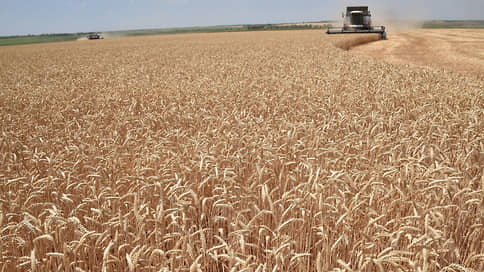The owner of the Rif trading house, Petr Khodykin, invests in grain production
[ad_1]

Considered the beneficiary of the second wheat exporter in Russia, Trade House Rif, Pyotr Khodykin invests in grain production. He became the owner of an enterprise that owns about 9 thousand hectares of agricultural land in the Rostov region with an estimated value of 1.8 billion rubles. Analysts do not see significant synergies between this business and grain trading, but note that farmland in the south remains a valuable asset, despite declining profitability in crop production.
Pyotr Khodykin, considered the beneficiary of the large grain exporter Trade House Rif, became the owner of the Steppe agricultural enterprise in the Rostov region at the end of January 2024, follows from the Unified State Register of Legal Entities. According to a Kommersant source familiar with the deal, Steppe manages about 9 thousand hectares of agricultural land. Director of Sovecon Andrey Sizov estimates the possible cost of a farm of such area in the Rostov region at 1.8 billion rubles, or 200 thousand rubles. for 1 ha. Pyotr Khodykin did not provide a comment. Kommersant was unable to contact the former owner of Steppe, Anatoly Aubekerov.
According to the Rusagrotrans analytical center, the Rif trade house at the end of the first half of this season was the second exporter of wheat in Russia, having shipped 5.9 million tons from July 1 to December 28, 2023. First place was taken by Green Gates with 6.1 million tons, third place by Aston with 2.7 million tons. Since the end of 2023, information about the owner of the Reef Trade House has not been disclosed in the Unified State Register of Legal Entities. As of December 31, 2022, the report named Peter Khodykin as the owner. In 2022, the revenue of the Reef Trade House increased by 6.5%, to 188.4 billion rubles, net profit was at the level of 4.3 billion rubles.
“Steppe” is not the first investment in agribusiness for Pyotr Khodykin. According to the Unified State Register of Legal Entities, he also owns YugAgroHolding LLC in the Rostov region, which, as stated in the profile on HeadHunter, cultivates 30 thousand hectares of agricultural land. A Kommersant source says that Mr. Khodykin is interested in further expanding the portfolio of agricultural assets, clarifying that this business is developing separately from the Reef Trade House.
General Director of the Institute for Agricultural Market Studies (IKAR) Dmitry Rylko says that the volume of harvest from farms with an area of 40 thousand hectares will not be of decisive importance in the scale of the business of the Reef Trade House. According to him, rather, we are talking about a separate profitable business, investments in which may be more profitable than, for example, deposits. Andrey Sizov also does not see any significant synergy for the grain trader with agricultural enterprises. According to him, now grain trading is a more promising and profitable business than agricultural business. In this case, we can talk about investments in understandable assets, probably located close to existing farms, the expert notes.
As noted in the review of Rosselkhozbank, crop production has significant unrealized potential, and both large agricultural holdings and non-core investors are showing interest in land assets. BEFL’s latest survey said that with yields falling in the crop sector, the first half of 2023 saw a significant number of offers for land assets from smaller players. In 2023, the growth in prices for such assets has stabilized after growth a year earlier, but agricultural land does not lose its position as an attractive investment object, BEFL analysts say.
Andrei Sizov notes a decrease in the profitability of agricultural producers in all regions, but in the south, due to their proximity to ports, farms remain profitable, and therefore it is unlikely to expect many offers for the sale of farmland here. Dmitry Rylko, however, believes that in the long term the situation with profitability in crop production, which is very difficult today, should improve.
According to Prozerno, wheat of the third and fourth classes with pick-up as of February 2024 cost an average of 13.3 thousand rubles. and 11 thousand rubles. against 13.4 thousand and 11.6 thousand rubles. per ton a year earlier. On average, barley fell in price year on year from 10.3 thousand rubles. up to 9.2 thousand rubles. per ton, sunflower – from 31 thousand rubles. up to 27.5 thousand rubles. per ton. At the same time, as indicated by ICAR, the cost of grain production by the beginning of 2023 had risen to historical highs.
[ad_2]
Source link





